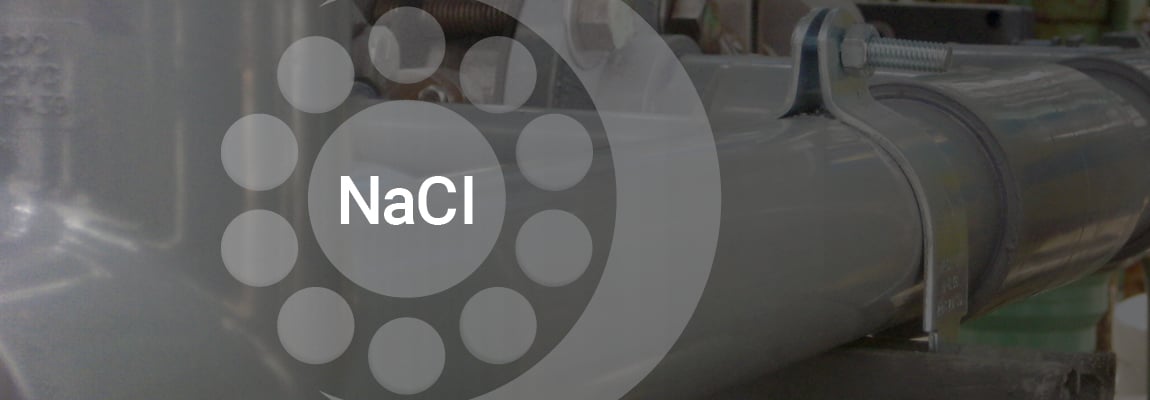How Well Do Metals and Plastics Resist Salts and Brine
When employing salts, brine or other saltwater solutions in industrial processes, a plant’s choice of piping material greatly impacts lifecycle costs.
Traditionally, many industrial plants have deferred to metallic piping options. For facilities using salts, this either means spending much more on corrosion-resistant stainless steel or other alloys or embracing corroded carbon steel. Over the course of years or decades, this can result in millions of dollars saved in direct expenses and opportunity costs caused by downtime.
Proper material selection limits unnecessary repairs, downtime and cost. Let’s look at how industrial processes use different salts then compare metal piping to plastics, which are inherently resistant to salt and brine.
How Are Salts Used In Industrial Processing
Across all segments of industrial processing, from power generation to the semiconductor industry, salts may be involved. In general, a salt is a compound resulting from an acid and base reaction. Three common salt compounds are:
Sodium Chloride (Brine) or Seawater
Sodium chloride (NaCl), which is commonly referred to as seawater or brine when dissolved in water, is made from sodium (Na) and chlorine (Cl).
In power generation, sodium chloride is utilized in the ion exchange process of water softening used in feed water production. During water treatment, particularly in coastal regions, piping systems must be able to handle high-salinity water before it goes through desalination, the process that separates dissolved salts and other minerals from the water. Also, for coastal industrial plants, seawater is an easily available resource that is often used untreated in once-through cooling systems.
Other Salts
Copper sulfate (CuSO4) combines copper (Cu), sulfur (S) and oxygen (O). Functionally, it may be used as a cleaning agent, as it can kill bacteria, algae and other forms of microbial contamination. In a number of industrial applications, copper sulfate is used in metal finishing for copper plating and is commonly used for semiconductor processing for metal etching.
Sodium sulfate (Na2SO4) is a compound comprised of sodium (Na), sulfur (S) and oxygen (O). Compared to other salts, sodium sulfate is much less corrosive, which is why it’s a common choice for manufacturing wood pulp in the pulp and paper industry and for dyeing fabrics in the textile industry.
Metal’s Suitability with Salts
Metals are inherently susceptible to corrosion when exposed to water, especially when the water contains dissolved salt. The salt creates an electrolyte solution, which promotes the flow of electrons from one electrode to another. The salty solution encourages metal pipe atoms to break free of the pipe wall and attach to free-floating ions within the fluid, weakening the material. This process can also form rust.
To lessen the effect of corrosion, industrial plants must specify alternative materials or alter their process. Plants wishing to use metal must either choose an expensive alloy like high-grade stainless steel. Process changes like injecting additional chemicals to balance the pH and clean the inorganic materials only delays the inevitable: standard carbon steel pipe will still corrode at a much faster rate than an alloy or a plastic pipe. Plants that use metal piping for salt may end up in the never-ending cycle of unnecessary repairs, downtime and installation costs.
Our product and engineering team takes a deeper look at corrosion and scaling, installed cost, temperature and more in the ebook, Metal v. CPVC Piping Systems.
Plastic’s Suitability with Salts
Unlike metals, floating ions pass right over plastic materials without any negative effects. All plastics are inherently resistant to all salts. Plastics are chemically inert, so salt can not corrode plastics as it does metal and scale is less likely to build up. When handling salts, specifying plastic piping can help avoid unnecessary repairs and high material costs. Most plastic piping will have a material cost much lower than corrosion-resistant metal alloys, and they are much easier to install and repair due to their light weight and ability to be solvent-welded.
Corzan® CPVC: A Clear Advantage for Salts
Like all plastics, chlorinated polyvinyl chloride (CPVC) is inherently corrosion resistant, but a combination of qualities distinguishes it from other plastics. CPVC remains reliable at higher temperatures than cheaper plastics, such as polyvinyl chloride (PVC) and is more affordable than specialty plastics like polypropylene random co-polymer (PP-R). Corzan® CPVC is of the highest quality, having been tested against over 500 chemicals and compounds to determine suitability and is proven to provide excellent reliability for salts like sodium chloride. It has a higher operating temperature than other plastics and lower-quality CPVC, is consistent and traceable across batches, has been proven to have a superior formulation and is manufactured by only approved partner manufacturers, compared to generic CPVC products.
From chemistry to cost, plastics outperform metals for sodium chloride and other salts. Choosing Corzan CPVC brings long-term results and is backed by over 60 years of industry-leading research and experience. Sodium chloride is among the top 10 chemicals that engineers trust Corzan CPVC to handle, especially compared with metals, other plastics and generic CPVC.

